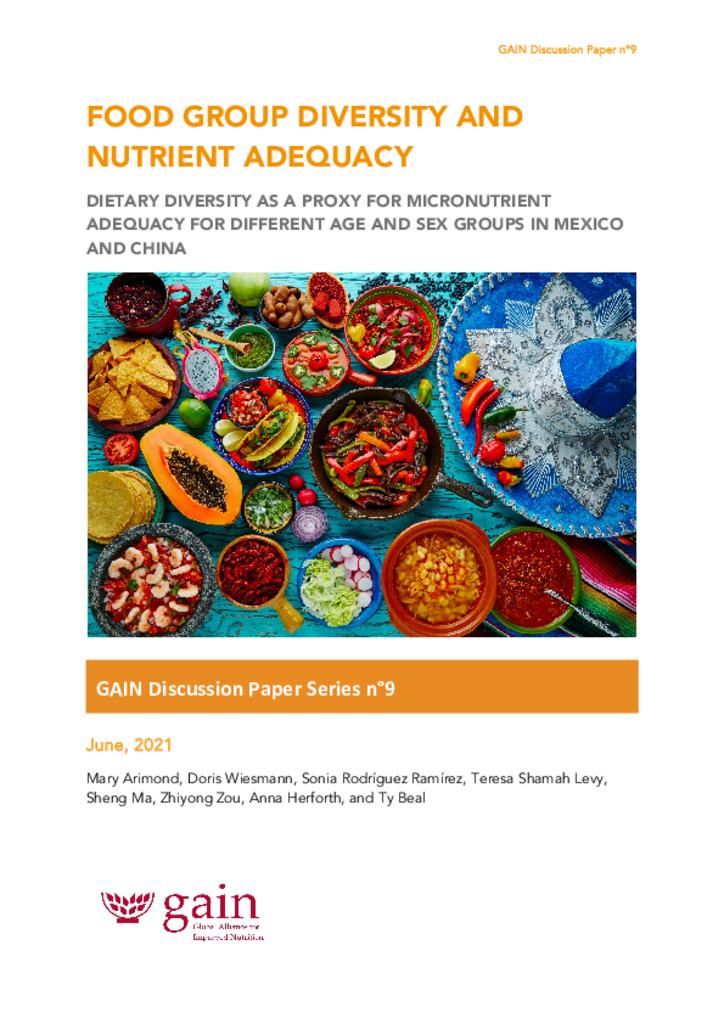Poor diet quality is a major cause of morbidity and mortality at all country income levels. Yet to date, low-cost, feasible metrics for population-level assessment and monitoring of diet quality are scarce. High-quality diets are safe, meet nutrient needs for healthy growth and development at all ages, and reduce risks of non-communicable disease. While comprehensive metrics covering multiple dimensions are desirable, there is also a role for simpler indicators reflecting nutrient adequacy. This is particularly so in contexts where diets lack diversity and deliver inadequate micronutrients.
To meet these needs, several simple food group diversity indicators have been developed. These include the Minimum Dietary Diversity (MDD) indicator for infants and young children, and a similar indicator, MDD-W, developed for women of reproductive age. However, there is demand for indicators for other demographic groups. This paper thus tests the relevance and performance of the MDD-W indicator and its underlying 10-point food group diversity score (FGDS) for various demographic groups using data from two large upper-middle-income countries, Mexico and China.
We found that the FGDS was consistently and reasonably strongly associated with a summary measure of micronutrient adequacy in both countries and for all age groups. The MDD-W cut-off of five or more food groups allows expression of the indicator in terms of population prevalence meeting this minimum, rather than as a score. This may have advantages for communication and target setting. However, while this cut-off worked well for most demographic groups in Mexico, it did not in China. We conclude that when more resource-intensive measurement is infeasible, FGDS is a meaningful proxy indicator of micronutrient adequacy for diverse demographic groups and in diverse country income settings. The issue of universal cut-offs remains challenging and unresolved, and additional studies in middle-income countries and with diverse age groups are warranted.
